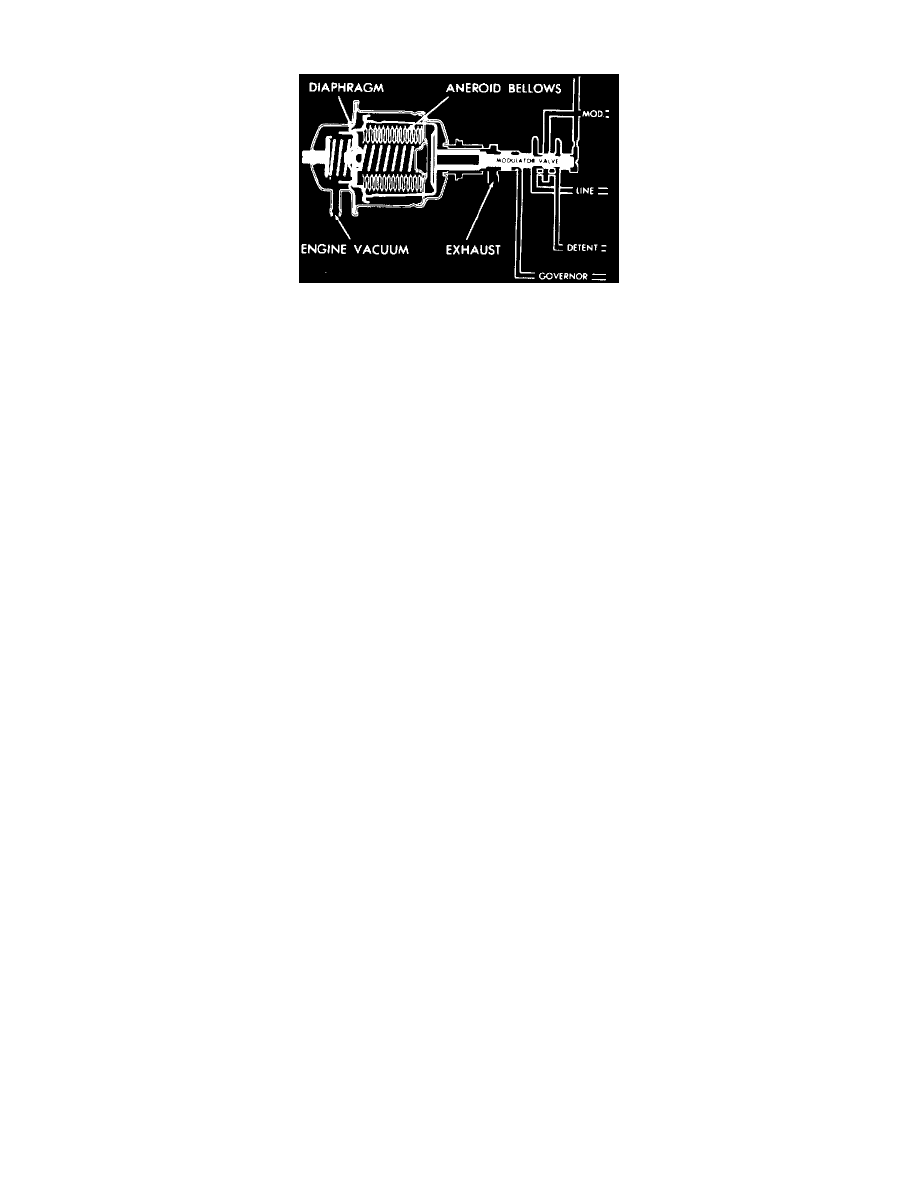K 1500 Truck 4WD V8-350 5.7L (1986)

Shift Modulator: Description and Operation
Description
The engine vacuum signal is provided by the vacuum modulator which consists of an evacuated bellows, a diaphragm and a spring. These are so
arranged that the bellows and spring apply force that acts on the modulator valve so that it increases modulator pressure. Engine vacuum and a spring
oppose the bellows and spring to control modulator pressure.
To reduce the effect of altitude on shift points, the effective area of the diaphragm is different than that of the bellows. Atmospheric pressure acts on the
resulting differential area to reduce modulator pressure.
Operation
A vacuum modulator is used to sense engine torque input to the transmission automatically. The vacuum modulator transmits this signal to the pressure
regulator, which controls line pressure, so that all torque requirements of the transmission are met and proper shift spacing is obtained at all throttle
openings.
Vacuum Modulator Valve
Provides modulator pressure that senses engine torque and vehicle speed. The vacuum modulator speed is used to vary the shift points according to
throttle opening and to raise line pressure proportional to engine torque.
2-3 Modulator Valve
Senses modulator pressure to apply a variable force that tends to hold the 2-3 shift valve downshifted.
3-2 Valve
Shuts off modulator pressure from acting on shift valves after direct clutch has been applied. This allows fairly heavy throttle operation in third speed
without downshifting. In third speed detent pressure or modulator pressure above 105 psi can be directed to the shift valves to provide downshift forces.
